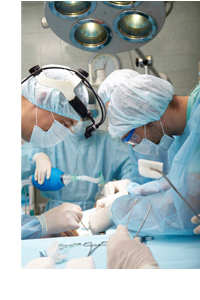What are the Treatments for peripheral arterial disease (PAD)?
The optimum goals for treating PAD are to reduce leg pain, improve the mobility and hence the quality of life, and prevent amputation or loss of limb. There are several approaches on treating PAD: lifestyle modification, medications, and revascularization (increase the blood flow to the disease leg).
- Lifestyle Changes: All patients with PAD should change their previous lifestyle to reduce and control the risk factors that lead to PAD. For examples, quit smoking; lower the blood pressure, cholesterol and blood glucose levels; follow a healthy diet; exercise and aim for healthy weight.
- Medications: There are two main goals for medications to play a role in treatment of PAD. One is to control the PAD risk factors; another is to relief the symptoms of claudication. For patients with several comorbidities, doctors might advise them to take multiple medications daily.
- Revascularization: The aim of this treatment is to increase the blood flow to the disease leg. When claudication worsens, or rest pain persists, or ulcers and gangrene occur, revascularization should be considered. There are currently 2 ways of revascularization: Endovascular or Open Surgery.
- Endovascular revascularization (Angioplasty +/- Stenting): This is a minimally invasive procedure, performed by puncturing the artery and inserting very long and thin catheters into the lumen of the arteries to perform the operation. A special balloon will be placed in the diseased artery wall through a small wire inserted from the arm or groin. Then the balloon will inflate to smash the plaque against the artery walls to open the narrowed artery. In some cases, stents may also be inserted in order to optimize the result by keeping the artery open. As the wound is just a needle hole, this procedure can be done under local anaesthesia. It is less invasive and causes minimal trauma to patient, compare to open surgery. This procedure has to be done in a special operation room equipped with X-ray facilities. The patients only need to stay in hospital for 1-2 days.
-
 Open Bypass Surgery: The purpose of bypass surgery, is to create a new path for the blood flow to the lower extremities. During a bypass surgery, vascular surgeon will suture either one of your veins or an artificial graft blood vessel above and below the blocked area, so that the blood can bypass the occluded segment and continue to supply blood to the lower part of leg below the occlusion. This surgery is usually done under general anaesthesia. It takes longer for the patient recover after the operation compare with angioplasty.
Open Bypass Surgery: The purpose of bypass surgery, is to create a new path for the blood flow to the lower extremities. During a bypass surgery, vascular surgeon will suture either one of your veins or an artificial graft blood vessel above and below the blocked area, so that the blood can bypass the occluded segment and continue to supply blood to the lower part of leg below the occlusion. This surgery is usually done under general anaesthesia. It takes longer for the patient recover after the operation compare with angioplasty.
In general, angioplasty is not as durable as the bypass surgery, but the procedure can be repeated, and bypass surgery is always a later possibility if angioplasty fails.
Vascular surgeon will determine which type of treatment is suitable for the patient based on the exact location, anatomy of the blood vessel involved. Generally, less invasive procedure, like angioplasty, will be considered first. However, if the lesion is complicated, or angioplasty failed, bypass surgery is sometimes necessary. Nowadays, with the advance in endovascular revascularization techniques and equipment, angioplasty has prompted to become the standard first approach for patients requiring revascularization over traditional open surgery.
Prevention
The best way to prevent PAD is to adopt a healthier lifestyle, such as following a low-cholesterol diet, regular exercising, quit smoking and getting high blood pressure and diabetes under control can lower the risk significantly.
- Previous Article: How can Peripheral arterial disease (PAD) be diagnosed?
- Related Article:
What is Peripheral Arterial Disease and its Clinical Classification?
How can Peripheral arterial disease (PAD) be diagnosed?
What are the Treatments and Prevention for peripheral arterial disease (PAD)?
